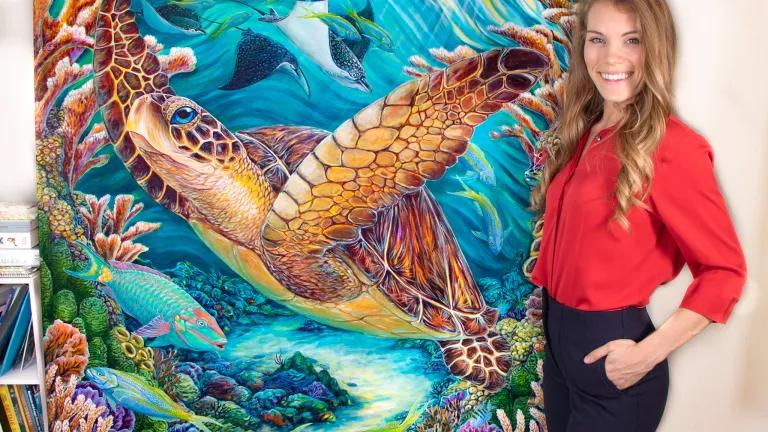In recent years, Cultural Exchange Programs have played a major role in enriching Gulf arts. From music and painting to film and dance, the Gulf region has seen a strong wave of global collaboration. These programs are not just about artists traveling abroad—they are shaping a new era of artistic creativity and dialogue.
Cultural exchange is more than a soft-diplomacy tool. It is becoming a bridge between different traditions, styles, and generations of artists. With government support and growing public interest, Gulf countries like the UAE, Qatar, Saudi Arabia, and Bahrain are welcoming the world to their creative platforms.
What Are Cultural Exchange Programs?
Cultural Exchange Programs involve the exchange of artists, creators, students, and professionals between countries. These programs offer participants the chance to live and learn in a new cultural environment, share artistic methods, and collaborate on cross-border projects.
In the Gulf, cultural exchange initiatives are often backed by national organizations, embassies, universities, or international councils. They may include residencies, workshops, internships, exhibitions, and performances.
7 Positive Ways Cultural Exchange Is Enriching Gulf Arts
Let’s explore the key ways in which cultural exchange programs are leaving a lasting impact on the Gulf art scene:
1. Exposure to Global Art Practices

Many Gulf artists are now exposed to global trends, materials, and storytelling techniques. This allows them to mix international styles with local traditions, creating a unique and modern artistic language.
2. Skill Development and Training
Through exchange programs, young artists receive hands-on training from international experts. Whether it’s digital media, contemporary dance, or visual arts, the skills learned abroad are later brought home and shared with local communities.
3. Boosting Artistic Confidence
Artists who participate in global events gain confidence by presenting their work on international platforms. Being part of exhibitions and festivals helps them feel more validated and inspired to continue their craft.
4. Creating Opportunities for Collaboration
Exchange programs promote collaboration between Gulf and foreign artists. From joint exhibitions to film co-productions, this interaction creates projects that reflect multiple cultures and reach wider audiences.
5. Promoting Cultural Understanding
One of the most important impacts of Cultural Exchange Programs is their role in promoting cultural understanding. Artists become ambassadors of their homeland while learning to respect and appreciate different cultures.
6. Building Creative Economies

As Gulf countries build museums, art hubs, and creative districts, Cultural Exchange Programs contribute to the professionalization of art. They support job creation and help build a more sustainable creative economy.
7. Enhancing Cultural Diplomacy
Through Cultural Exchange Programs, governments build international goodwill. By sending Gulf talent abroad and hosting foreign artists, the region strengthens its global image and cultural diplomacy efforts
Real-Life Examples from the Gulf
Several notable programs and events show how cultural exchange is shaping the Gulf art landscape:
- Art Jameel’s residency programs in Saudi Arabia bring artists from around the world to collaborate with local creatives.
- Qatar Museums’ Year of Culture initiative celebrates partnerships with countries like India, France, and the US through art, music, and design.
- Dubai’s Expo 2020 featured hundreds of international artists, giving local audiences access to global perspectives.
Government Support and Cultural Policy
Gulf countries are heavily investing in the arts as part of their national visions. For example, Saudi Arabia’s Vision 2030aims to build a vibrant society with arts and culture at its core. This includes sponsoring exchange programs, fellowships, and partnerships with global institutions.
In the UAE, the Ministry of Culture and Youth actively encourages international collaborations. Dubai Culture and Abu Dhabi’s Department of Culture and Tourism both support artist residencies and cultural festivals.
These actions show that cultural exchange is not just a trend—it is part of long-term national strategies.
Challenges in Cultural Exchange
While cultural exchange programs bring many benefits, they also face challenges:
- Language barriers can limit deep communication.
- Visa issues and travel restrictions sometimes delay artist exchanges.
- Cultural sensitivities must be handled carefully to avoid misunderstanding or offense.
However, many programs are working to overcome these barriers through better planning, translation support, and cultural orientation sessions.
Future of Cultural Exchange in the Gulf
As the Gulf becomes a rising center of global culture, the role of exchange programs will grow even stronger. Future plans may include:
- More virtual artist residencies and online collaborations.
- Deeper school-level art exchange programs to nurture creativity from a young age.
- Stronger regional partnerships among Gulf countries to build a shared cultural platform.
With increasing global attention on the Middle East, cultural exchange offers the region an opportunity to redefine itself not just economically, but also artistically.
Conclusion: A Richer Cultural Future
Cultural Exchange Programs are more than international travel opportunities—they are shaping the future of Gulf arts. By bringing together talent, ideas, and cultural stories from across the world, these programs help Gulf artists grow, connect, and inspire.
As the Gulf continues to invest in arts and culture, we can expect more beautiful blends of tradition and innovation, local pride and global imagination.
read more- 7 Inspiring Gulf Photographers Who See Beauty in Everyday Life



